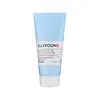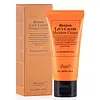What's inside
What's inside
 Key Ingredients
Key Ingredients

 Benefits
Benefits

 Concerns
Concerns

No concerns
 Ingredients Side-by-side
Ingredients Side-by-side

Water
Skin ConditioningPropanediol
SolventGlycerin
HumectantSqualane
EmollientCaprylic/Capric Triglyceride
MaskingPolyglyceryl-3 Methylglucose Distearate
Emulsifying1,2-Hexanediol
Skin ConditioningAmmonium Acryloyldimethyltaurate/Vp Copolymer
Carbomer
Emulsion StabilisingTromethamine
BufferingGlyceryl Caprylate
EmollientEthylhexylglycerin
Skin ConditioningBetaine
HumectantCeramide NP
Skin ConditioningTocopherol
AntioxidantWater
Skin ConditioningDipropylene Glycol
HumectantCaprylic/Capric Triglyceride
MaskingDaucus Carota Sativa Root Water
MaskingGlycerin
HumectantArachidyl Alcohol
EmollientEthylhexyl Palmitate
EmollientCetearyl Alcohol
Emollient1,2-Hexanediol
Skin ConditioningBehenyl Alcohol
EmollientPanthenol
Skin ConditioningButyrospermum Parkii Butter
Skin ConditioningArachidyl Glucoside
EmulsifyingSorbitan Olivate
EmulsifyingGlyceryl Caprylate
EmollientAmmonium Acryloyldimethyltaurate/Vp Copolymer
Helianthus Annuus Seed Oil
EmollientPropanediol
SolventPentylene Glycol
Skin ConditioningCanola Oil
EmollientSodium PCA
HumectantSodium Gluconate
Skin ConditioningGlycine Soja Oil
EmollientDipotassium Glycyrrhizate
HumectantButylene Glycol
HumectantGlucose
HumectantTocopheryl Acetate
AntioxidantAllantoin
Skin ConditioningHydrogenated Lecithin
EmulsifyingDaucus Carota Sativa Seed Oil
EmollientMelaleuca Alternifolia Leaf Oil
AntioxidantSantalum Album Oil
MaskingCamellia Japonica Flower Extract
EmollientDaucus Carota Sativa Root Extract
Skin ConditioningSodium Hyaluronate
HumectantBixa Orellana Seed Oil
EmollientPhytosteryl/Octyldodecyl Lauroyl Glutamate
Skin ConditioningBeta-Carotene
Skin ConditioningCeramide NP
Skin ConditioningTocopherol
AntioxidantWater, Dipropylene Glycol, Caprylic/Capric Triglyceride, Daucus Carota Sativa Root Water, Glycerin, Arachidyl Alcohol, Ethylhexyl Palmitate, Cetearyl Alcohol, 1,2-Hexanediol, Behenyl Alcohol, Panthenol, Butyrospermum Parkii Butter, Arachidyl Glucoside, Sorbitan Olivate, Glyceryl Caprylate, Ammonium Acryloyldimethyltaurate/Vp Copolymer, Helianthus Annuus Seed Oil, Propanediol, Pentylene Glycol, Canola Oil, Sodium PCA, Sodium Gluconate, Glycine Soja Oil, Dipotassium Glycyrrhizate, Butylene Glycol, Glucose, Tocopheryl Acetate, Allantoin, Hydrogenated Lecithin, Daucus Carota Sativa Seed Oil, Melaleuca Alternifolia Leaf Oil, Santalum Album Oil, Camellia Japonica Flower Extract, Daucus Carota Sativa Root Extract, Sodium Hyaluronate, Bixa Orellana Seed Oil, Phytosteryl/Octyldodecyl Lauroyl Glutamate, Beta-Carotene, Ceramide NP, Tocopherol
 Reviews
Reviews

Ingredients Explained
These ingredients are found in both products.
Ingredients higher up in an ingredient list are typically present in a larger amount.
1,2-Hexanediol is a synthetic liquid and another multi-functional powerhouse.
It is a:
- Humectant, drawing moisture into the skin
- Emollient, helping to soften skin
- Solvent, dispersing and stabilizing formulas
- Preservative booster, enhancing the antimicrobial activity of other preservatives
Ammonium Acryloyldimethyltaurate/Vp Copolymer (let's call it AAVC for short) is a synthetically created polymer. It's used as a film-forming agent and used to thicken the consistency of products.
AAVC is able to increase the consistency and viscosity of products due to its large molecule size. It also prevents ingredients from separating.
This ingredient is an emollient, solvent, and texture enhancer. It is considered a skin-softener by helping the skin prevent moisture loss.
It helps thicken a product's formula and makes it easier to spread by dissolving clumping compounds.
Caprylic Triglyceride is made by combining glycerin with coconut oil, forming a clear liquid.
While there is an assumption Caprylic Triglyceride can clog pores due to it being derived from coconut oil, there is no research supporting this.
Learn more about Caprylic/Capric TriglycerideCeramide NP is a type of ceramide and formally known as ceramide 3.
Ceramides are intercellular lipids naturally found in our skin that bonds dead skin cells together to create a barrier. They are known for their ability to hold water and thus are a great ingredient for dry skin.
Ceramides are an important building block for our skin barrier. A stronger barrier helps the skin look more firm and hydrated. By bolstering the skin ceramides act as a barrier against irritating ingredients. This can help with inflammation as well.
If you would like to eat ceramides, sweet potatoes contain a small amount.
Read more about other common types of ceramides here:
Ceramide AP
Ceramide EOP
Glycerin is already naturally found in your skin. It helps moisturize and protect your skin.
A study from 2016 found glycerin to be more effective as a humectant than AHAs and hyaluronic acid.
As a humectant, it helps the skin stay hydrated by pulling moisture to your skin. The low molecular weight of glycerin allows it to pull moisture into the deeper layers of your skin.
Hydrated skin improves your skin barrier; Your skin barrier helps protect against irritants and bacteria.
Glycerin has also been found to have antimicrobial and antiviral properties. Due to these properties, glycerin is often used in wound and burn treatments.
In cosmetics, glycerin is usually derived from plants such as soybean or palm. However, it can also be sourced from animals, such as tallow or animal fat.
This ingredient is organic, colorless, odorless, and non-toxic.
Glycerin is the name for this ingredient in American English. British English uses Glycerol/Glycerine.
Learn more about GlycerinGlyceryl Caprylate comes from glycerin and caprylic acid, a fatty acid from coconut. It has emollient and emulsifier properties.
As an emollient, it helps hydrate your skin. Emollients work by creating a barrier on your skin to trap moisture in, helping to keep your skin soft and smooth.
On the other hand, emulsifiers prevent ingredients (such as oil and water) from separating.
Learn more about Glyceryl CaprylatePropanediol is an all-star ingredient. It softens, hydrates, and smooths the skin.
It’s often used to:
Propanediol is not likely to cause sensitivity and considered safe to use. It is derived from corn or petroleum with a clear color and no scent.
Learn more about PropanediolTocopherol (also known as Vitamin E) is a common antioxidant used to help protect the skin from free-radicals and strengthen the skin barrier. It's also fat soluble - this means our skin is great at absorbing it.
Vitamin E also helps keep your natural skin lipids healthy. Your lipid skin barrier naturally consists of lipids, ceramides, and fatty acids. Vitamin E offers extra protection for your skin’s lipid barrier, keeping your skin healthy and nourished.
Another benefit is a bit of UV protection. Vitamin E helps reduce the damage caused by UVB rays. (It should not replace your sunscreen). Combining it with Vitamin C can decrease sunburned cells and hyperpigmentation after UV exposure.
You might have noticed Vitamin E + C often paired together. This is because it is great at stabilizing Vitamin C. Using the two together helps increase the effectiveness of both ingredients.
There are often claims that Vitamin E can reduce/prevent scarring, but these claims haven't been confirmed by scientific research.
Learn more about TocopherolWater. It's the most common cosmetic ingredient of all. You'll usually see it at the top of ingredient lists, meaning that it makes up the largest part of the product.
So why is it so popular? Water most often acts as a solvent - this means that it helps dissolve other ingredients into the formulation.
You'll also recognize water as that liquid we all need to stay alive. If you see this, drink a glass of water. Stay hydrated!
Learn more about Water